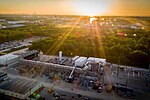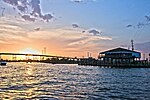Shoreacres, Texas
Cities in Chambers County, TexasCities in Harris County, TexasCities in TexasGalveston Bay AreaGreater Houston ... and 2 more
Populated coastal places in TexasUse mdy dates from July 2023

Shoreacres is a city located in Harris County in the U.S. state of Texas alongside State Highway 146. Established with a mayor-alderman form of city government, it was incorporated in 1949. The population was 1,566 at the 2020 census.
Excerpt from the Wikipedia article Shoreacres, Texas (License: CC BY-SA 3.0, Authors, Images).Shoreacres, Texas
Shore Acres Boulevard,
Geographical coordinates (GPS) Address Nearby Places Show on map
Geographical coordinates (GPS)
| Latitude | Longitude |
|---|---|
| N 29.620277777778 ° | E -95.016666666667 ° |
Address
Shore Acres Boulevard 650
77571
Texas, United States
Open on Google Maps






